巻号一覧

31 巻 (2006)
- 4 号 p. 115-
- 3 号 p. 95-
- 2 号 p. 25-
- 1 号 p. 1-
31 巻, 1 号
[No. 106]
選択された号の論文の1件中1~1を表示しています
- |<
- <
- 1
- >
- >|
論文
-
-無条件安定と等価な陽的積分法-神田 亮, 小泉 達也, 丸田 榮藏2006 年31 巻1 号 p. 1-14
発行日: 2006年
公開日: 2006/04/05
ジャーナル フリーThis paper describes an application of an explicit integration scheme for a control algorithm to the Hybrid Vibration Technique. The applied scheme is a combination of explicit Newmark β method with the modal truncation technique. Recently, it is considered in the structural design that some structures behave not only in elastic range also in elasto-plastic range even under wind loading. Therefore, the scheme must be able to follow non-linear dynamic behavior. On the other hand, the modal analysis can be performed only for a linear system. In order to perform the modal analysis in a non-linear system, it is assumed that restoring force of the structures consists of the component for assumed linear stiffness and unbalanced force. And, on the equation of motion, it is considered that assumed external force, which is equal to actual force added to unbalanced force, acts on the linear vibration system with the assumed linear stiffness. From the assumption, step-by-step integration can be carried out in the each mode on the generalized coordinate system for the assumed stiffness. The higher mode components are rejected by using the orthogonality of the generalized coordinate system because the components have the severe condition for the stability of the solution and little influence on the accuracy of the total response. As a result, the magnitude of integral time interval can be determined without considering the severe stable condition even though the response is calculated by means of an explicit scheme with conditional stable.
Numerical simulations are conducted for examining the performance of the applied scheme. The vibration model is multi-degree-of-freedom vibration system including the highest mode with much higher natural frequency than the other modes. Bi-linear model and elastic linear model are adapted to the restoring model. Assumed linear stiffness is utilized for the modal analysis in the every model. From the simulation, the applied scheme has the enough performance for conducting step-by-step integration in the Hybrid Vibration System.抄録全体を表示PDF形式でダウンロード (1986K)
- |<
- <
- 1
- >
- >|